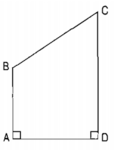Read the following passage and mark A, B, C or D on your answer sheet to indicate the correct answer for each of the questions
Coincident with concerns about the accelerating loss of species and habitats has been a growing appreciation of the importance of biological diversity, the number of species in a particular ecosystem, to the health of the Earth and human well-being. Much has been written about the diversity of terrestrial organisms, particularly the exceptionally rich life associated tropical rain-forest habitats. Relatively little has been said, however, about diversity of life in the sea even though coral reef systems are comparable to rain forests in terms of richness of life.
An alien exploring Earth would probably give priority to the planet's dominants - most distinctive feature - the ocean. Humans have a bias toward land that sometimes get in the way of truly examining global issues. Seen from far away, it is easy to realize landmasses occupy only one-third of the Earth’s surface. Given that two thirds of the Earth's surface is water and that marine life lives at all levels of the ocean, the total three-dimensional living space of the ocean is perhaps 100 times greater than that of land and contains more than 90 percent of all life on Earth even though the ocean has fewer distinct species.
The fact that half of the known species are thought to inhabit the world's rain forests doesn't seem surprising, considering the huge numbers of insects that comprise the bulk of the species. One scientist found many different species of ants in just one tree from a rain forest. While every species is different from every other species, their genetic makeup constrains them to be insects and to share similar characteristics with 750,000 species of insects. If basic, broad categories such as phyla and classes are given more emphasis than differentiating between species, then the greatest diversity of life is unquestionably by sea. Nearly every major type of plant and animal has some presentation there.
To appreciate fully the diversity and abundance of life in the sea, it helps to think small. Every spoonful of ocean water life, on the order of 100 to 100,000 bacteria cells plus assorted microscopic plants and animals, including larvae of organisms ranging from sponges and corals to starfish and clams and much more.
Which of the following is NOT mentioned as an example of microscopic sea life?
A. Coral
B. Shrimp
C. Sponges
B
Kiến thức: Đọc hiểu
Giải thích:
Loài nào sau đây KHÔNG được đề cập đến như là một ví dụ về sinh vật biển cực nhỏ?
A. san hô B. tôm
C. bọt biển D. sao biển
Thông tin: Every spoonful of ocean water life, on the order of 100 to 100,000 bacteria cells plus assorted microscopic plants and animals, including larvae of organisms ranging from sponges and corals to starfish and clams and much more.
Chỉ có B không được nhắc đến

















